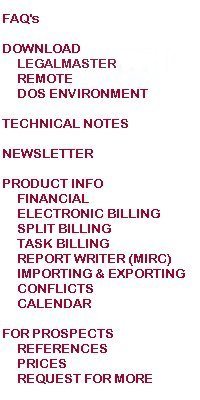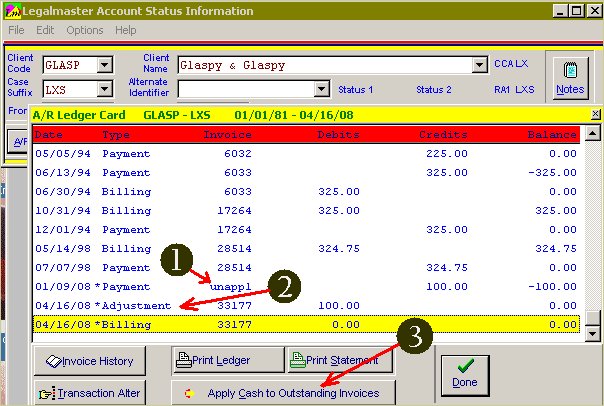


You probably noticed that Legalmaster stores the overpayment as unapplied. That is, it is not assigned to an invoice.
You have at least three choices.
You may adjust the matter's account up to a zero doing what you will with the money.
You may let the overpayment remain in the account and Legalmaster will automatically apply it to the next bill you generate.
You may move the unapplied monies to another matter as long as that matter belongs to the same client.
1) First let's deal with adjusting the account to zero.
You offset an unapplied payment with an unapplied adjustment.
Just go to the transaction entry screen and enter an adjustment as a positive number. Be sure to indicate that the adjustment is not to be applied by checking the non-applied box just to the right of the amount. Save and merge the transaction.
This will have the effect of creating a billing transaction for a zero amount with the adjustment attached to it.
Here's what the ledger card screen looks like after you enter the debit adjustment.

This is your original payment. Notice that it's unapplied.
Here is the adjustment you entered. Notice that Legalmaster created a corresponding billing for zero amount. That was so we would have an invoice number to which to apply the payment.
Click the button labeled "Apply Cash to Outstanding Invoices" and Legalmaster applies the unapplied payment to the new invoice and your're done!
2) Your second option, which is to let the overpayment sit until you bill the matter again and let Legalmaster apply it for you, requires that you do absolutely nothing.
3) To move an unapplied payment between matters, merely go to Transactions/Payments/List Alter, call up the payment, click the Alter button and select the option to redistribute the payment. You'll then see a screen showing you the payment. Check the box labeled "Move to another case," select the matter to which you want to move it and save. It's that simple.